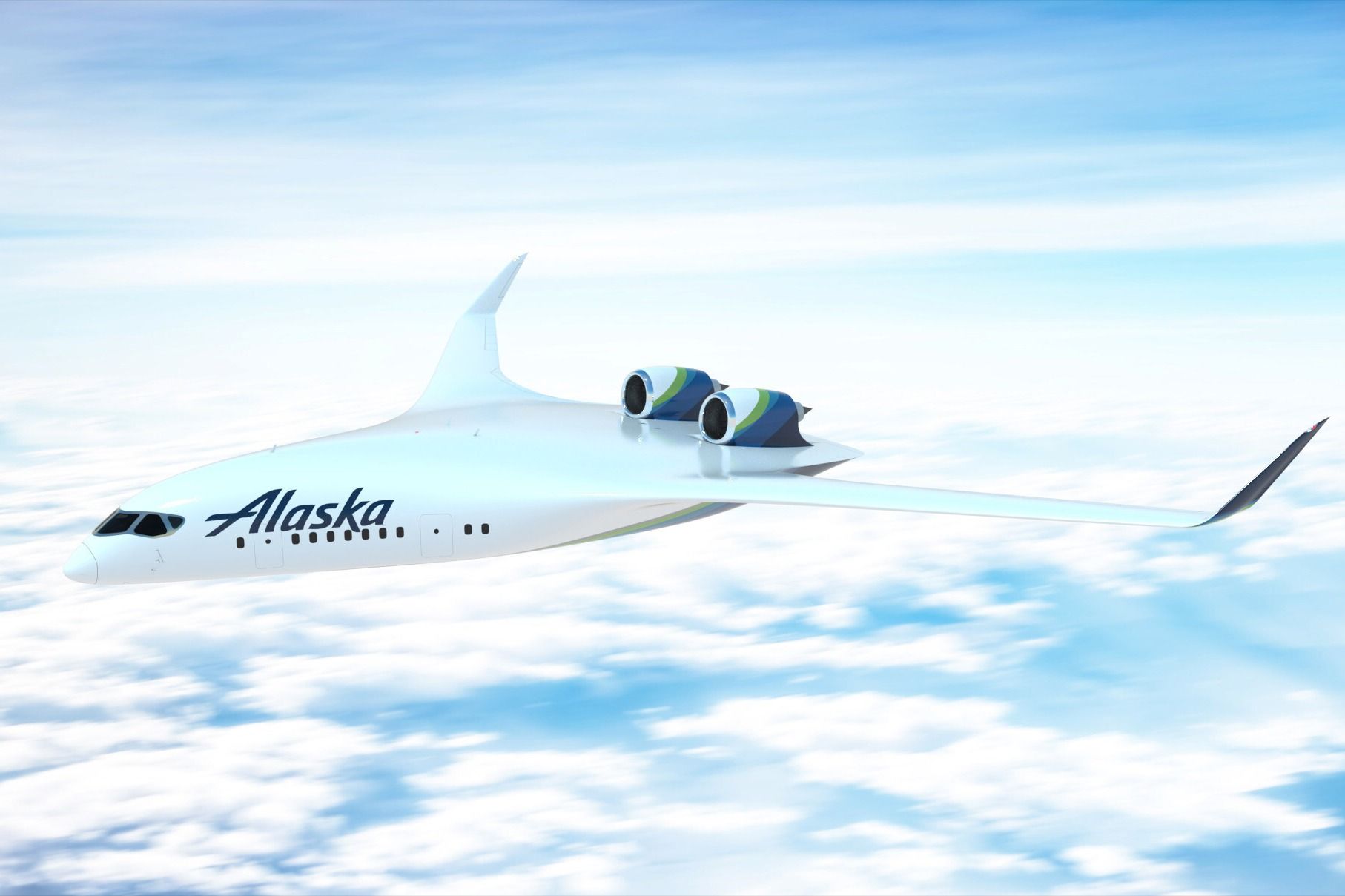Summary Alaska Airlines has invested in JetZero, which will include future aircraft orders. The BWB design reduces fuel consumption by 50% and also reduces carbon emissions. The blended wing design is not new; Airbus is also working on a similar design, which will utilize its concept for a hydrogen-propulsion aircraft.
Alaska Airlines announced a major investment in JetZero, which will see the airline supporting the aircraft developer as it works to bring a new Blended Wing Body aircraft to market. The JetZero airliner is purported to provide the operator with considerable savings in fuel burn and carbon emission, with both as much as 50% lower. Less fuel, fewer emissions Seattle-based Alaska Airlines has announced a significant investment in JetZero.

This will give the airline options for future aircraft orders and potentially help it achieve its ambitious goal of "net-zero carbon emissions by 2040". While the carrier already follows the strategy of improving operational and fleet efficiencies, utilizing Sustainable Aviation Fuel (SAF), and reducing waste, this new investment in Blended-Wing Body (BWB) aircraft will see the airline's fuel consumption decrease by 50%, and therefore, lower emissions. Airline SVP of Public Affairs and Sustainability at Alaska Airlines stated the following: "At Alaska, we are always looking for ways to innovate and shape the future of air travel for our guests, employees, and industry.
"We are proud to invest in JetZero’s development of this innovative next-generation aircraft, with a significant step-change in fuel efficiency. We and JetZero share a vision for more sustainable aviation, and we are excited to partner with them in creating that future." For the past 70 or so years, airliners have been built around a common concept - a central tube with wings on each side.
While there have been many variations on a theme - taller, longer, wider, shorter - the basic design hasn't changed in many, many years. Every now and then a new concept pops up that makes us wonder if a new design could be on the horizon. The Airbus 'blended wing body' aircraft pictured here is an example, but there's also the Boeing TTBW, Delft University's 'Flying V' concept and many more.
While it's exciting to see radical changes to the airplanes we're so used to, personally, I don't think they'll 'take off.' Redesigning the size and shape of aircraft means redesigning everything from airport gates to service vehicles to interior monuments, which isn't going to make the product appealing for airlines to purchase. Then again, Airbus made it work for the A380, to a certain extent, so perhaps I'm being cynical.
Do you think we'll ever see revolutionary new designs All in the design One of the biggest challenges for operators worldwide is to lower their carbon emissions, particularly with the aim of achieving net zero carbon emissions by 2050. While ideas such as SAF and carbon capture programs are still in their infancy and require years of research and considerable investment, the only real way to make a significant leap towards decarbonization is through technological advancement and integration of a new aircraft design. This is where the BWB design can make a significant contribution towards decarbonization.
The concept has existed for quite a while now . JetZero has closely collaborated with the US Air Force (USAF), NASA, and the Federal Aviation Administration (FAA) during the design phase of their BWB concept. With the ability to offer up to 50% lower fuel consumption, this design can provide considerable savings for its operators in the coming years.
JetZero's demonstrator has already received clearance from the FAA to perform test flights. The company hopes to fly a full-scale demonstrator in 2027. Not just JetZero Another aircraft manufacturer that has been working on a Blended-Wing Body aircraft concept in recent years is the European giant Airbus .
A few years ago, as part of the ZEROe project that Airbus launched , the manufacturer unveiled three aircraft concept designs, one of which was a BWB aircraft. While this BWB design is still in the concept stage, Airbus states that the aircraft, due to its design, will make it efficient and suitable for hydrogen propulsion. While hydrogen fuel cannot be stored in conventional aircraft, the BWB is a viable alternative that allows for safe hydrogen fuel, which makes it all the more desirable for the future of aviation.
Considering that Airbus is making headway in its hydrogen propulsion testing ( including the recent activation of its hydrogen engine ), it is a clear indication that the Blended Wing Body design holds huge potential and significance in the industry's future. Therefore, it is possible that in the future, JetZero might also consider hydrogen propulsion for its BWB design. Will we be seeing the flying Vs in the sky soon?.



















